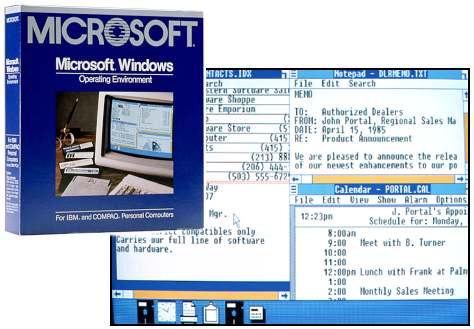|
The first Microsoft Windows
The first version of Microsoft Windows, Windows 1.0 was introduced on November 20, 1985 for $99, two years after the initial announcement. Bill Gates said: “It is unique software designed for the serious PC user” In 1983 (after the Apple Lisa, but before the Macintosh), Microsoft had announced the development of Windows, a graphical user interface (GUI) operating environment for MS-DOS, its own operating system for IBM PC and compatible computers that were commercialized since 1981. Microsoft was already working on Windows in 1982. Interface Manager was the code name for the new interface and was also meant to be the final name of the product, but the name Windows prevailed in the end, as it best described the boxes, or computing “windows,” that were at the core of the new system.
With Windows 1.0, rather than typing MS-DOS commands, users could move the mouse to point and click their way through screens, or “windows.” There were drop-down menus, scroll bars, icons, and dialog boxes that make programs easier to learn and use. Users could switch among programs without having to quit and restart each one. Windows 1.0 shipped with several programs, including MS-DOS file management, Paint, Windows Writer, Notepad, Calculator, and a calendar, card file, and clock to help you manage day-to-day activities. There was even a game: Reversi. Windows 1.0 required a minimum of 256 kilobytes (KB), two double-sided floppy disk drives, and a graphics adapter card. A hard disk and 512 KB memory was recommended for running multiple programs or when using DOS 3.0 or higher. References and useful resources:
|

